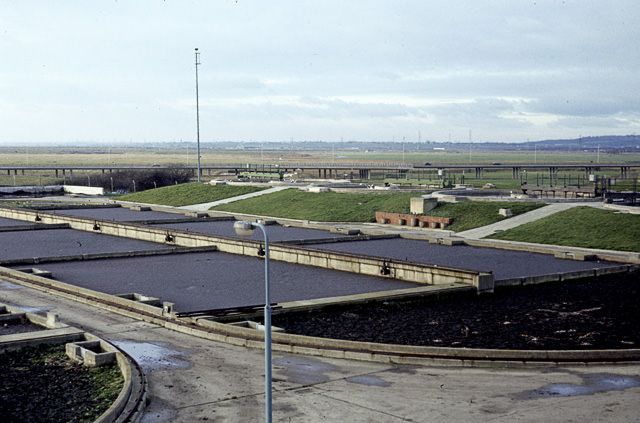Large Amounts of Antimicrobial Substances in Swedish Sewage Treatment Plants
Published on by Water Network Research, Official research team of The Water Network in Academic
A large number of antimicrobial substances are found in sludge and water in Swedish sewage treatment plants.
Several of them pass through the treatment plants and are released into the aquatic environment. However, with new technologies like ozone and activated carbon, emissions can be significantly reduced.
This is shown by Marcus Östman in his doctoral thesis, which he defends at Umeå University on Wednesday 7 November.

Representative Image, Source: Wikimedia Commons, Labeled for Reuse
Antimicrobial substances are used to fight bacteria, both in the form of antibiotics, but also as disinfectants and preservatives in cosmetics, etc. It is likely that antibiotics and other antimicrobials in the environment can contribute to the emergence of antibiotic resistant bacteria. For reasons of caution, it is therefore important to reduce the levels as much as possible.
Marcus Östman shows in the doctoral thesis that many antimicrobial substances are very common in sewage treatment plants and also at high levels. Highest concentrations are found in the sludge, especially of substances known as quaternary ammonium compounds. Treated wastewater effluents contains generally lower levels, but large amounts are still released in total.
At present, there is no legislation to regulate the emissions of these substances from sewage treatment plants. However, new technology is evaluated to address the problem, and in the thesis, Sweden's first full scale ozone treatment plant in Knivsta, as well as an activated carbon test plant, are evaluated.
"The ozone increases the removal efficiency, but it is first with activated carbon that results become very good for the compounds studied. Developing sewage treatment plants with improved advanced tertiary treatment, which has now begun, could reduce emissions to the environment of substances that are currently difficult to remove, such as antibiotics and many other drugs," says Marcus Östman.
The doctoral thesis is digitally available
Source: Umea University
Attached link
http://umu.diva-portal.org/smash/record.jsf?pid=diva2%3A1255290&dswid=5091Media
Taxonomy
- Reclaimed Wastewater
- Sewage Treatment
- Pharmaceuticals Waste
- Industrial Wastewater Treatment
- Decentralized Wastewater
- Wastewater Treatment
- Wastewater Collection
- Sewage
- Pharmaceutical Chemicals
- Sewage & Allied Waste